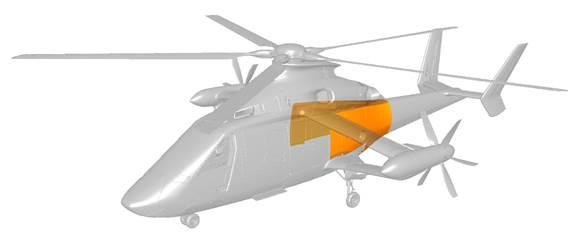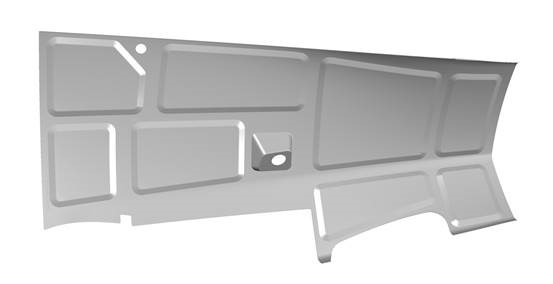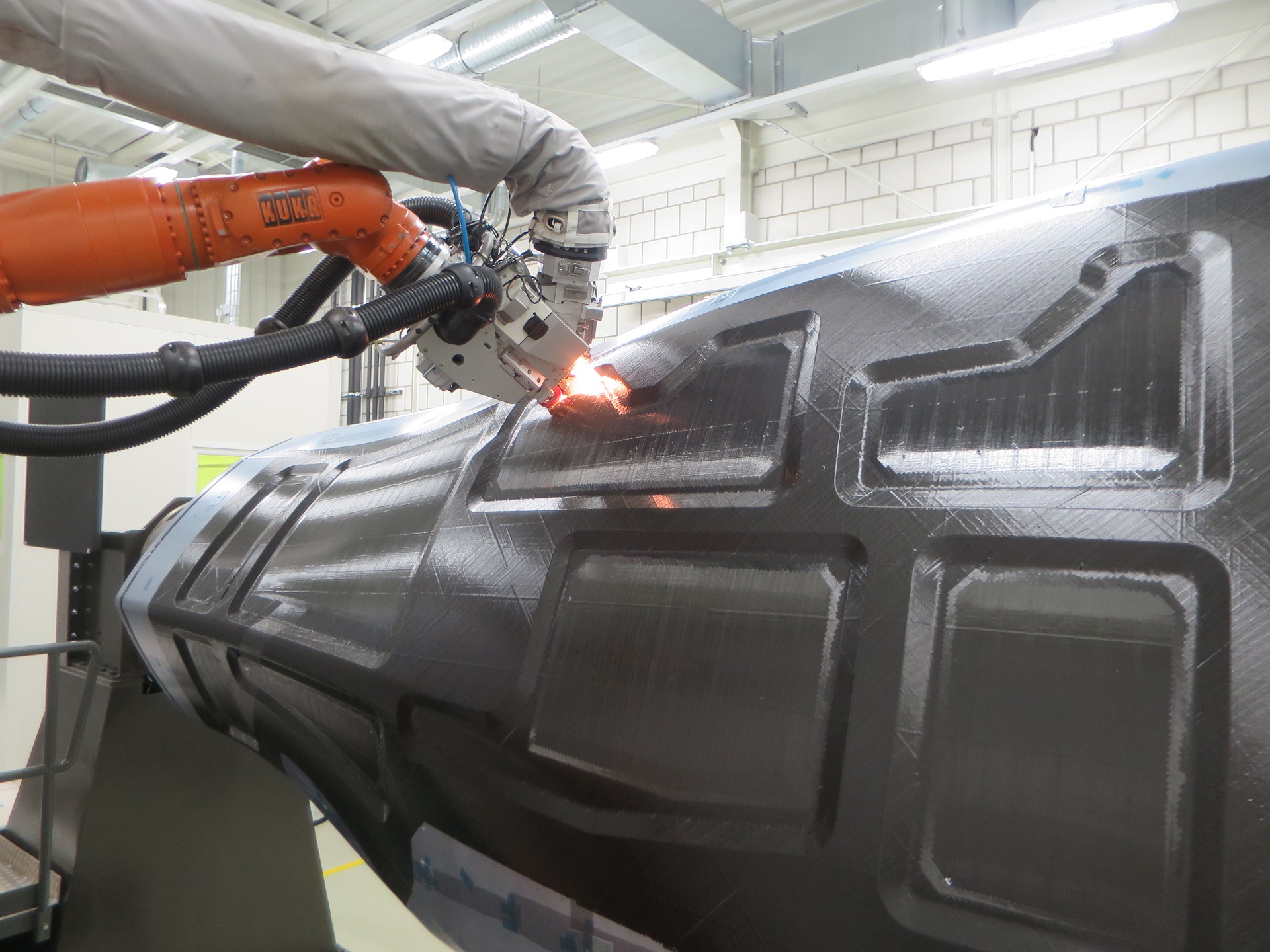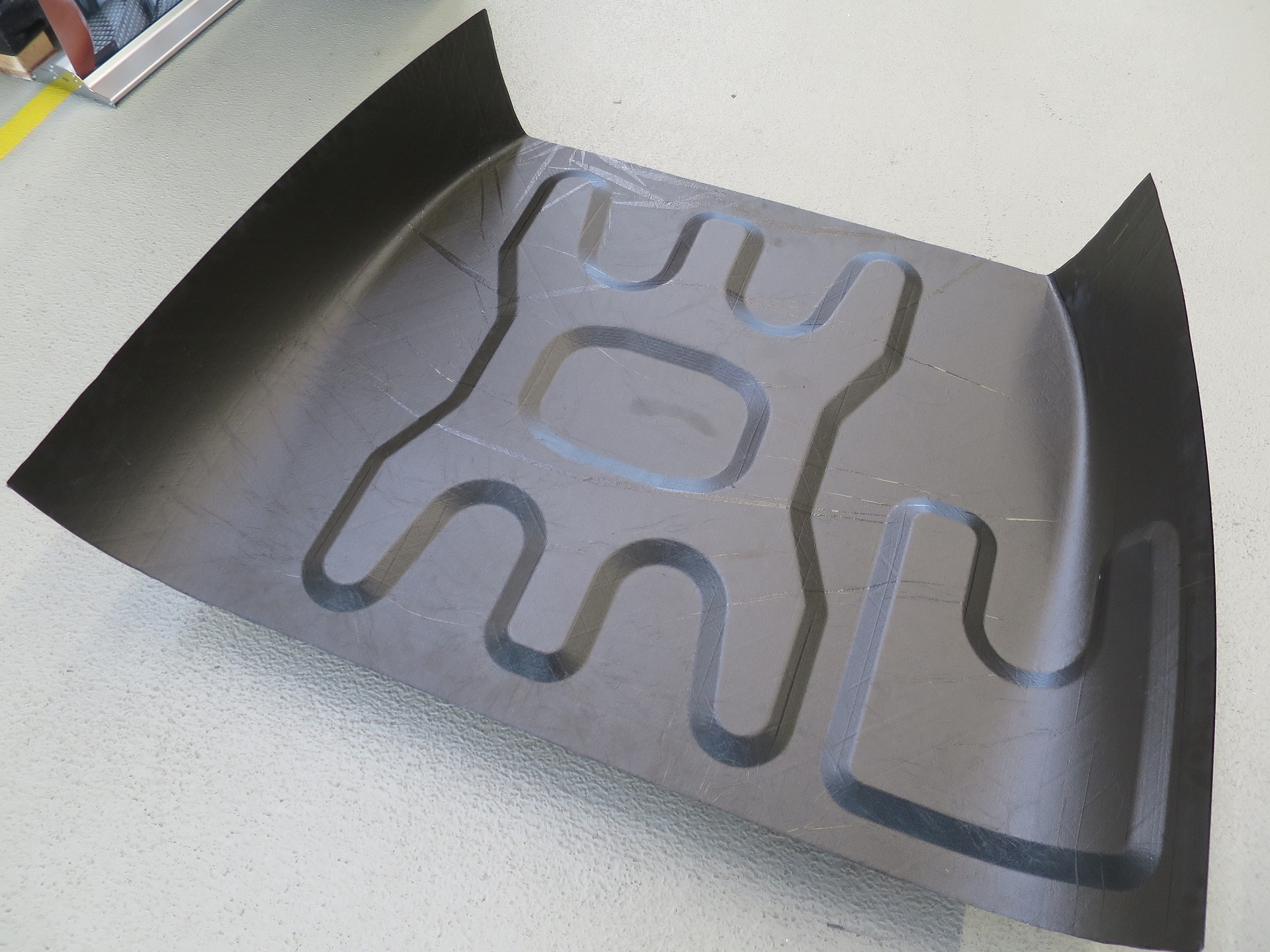Fraunhofer IGCV develops automated production of side shells for high-speed helicopters in CFRP sandwich construction
It is over 400 km/h fast and built to transport people safely, comfortably, and sustainably: As part of the European Union's CleanSky2 funding program, an innovative high-speed helicopter is being developed by a consortium led by Airbus Helicopters. The RACER (»Rapid And Cost-Efficient Rotorcraft«) is designed to achieve the best possible trade-off between speed, cost-efficiency, sustainability, and effectiveness in mission accomplishment. The Fraunhofer IGCV supplies a part of the side shells in CFRP sandwich construction: The two components for the RACER prototype are about to be produced. For the production of flying components, the scientists brought the necessary experience from previous projects, which also involved manufacturing components to air standards.

Automated Fiber Placement of helicopter sideshells
In the future, the helicopter is to be used in the civilian sector, for example, to bring emergency doctors to the scene of an emergency or to transport people in the oil and gas industry. The helicopter could also become part of new traffic concepts (keyword »Urban Air Mobility«). In addition to Airbus as the overall project manager, various other international partners are involved in implementing the helicopter. For example, the Romanian research institute INCAS is responsible for the design and layout of the parts. The jigs and fixtures required for the manufacturing process will be implemented in Italy and Romania.
Highly automated process chain based on Automated Fiber Placement
The Fraunhofer IGCV developed a manufacturing process for parts of the helicopter outer skin in sandwich construction. Such shell components, consisting of carbon fiber reinforced plastic as cover layers and sandwich cores of phenolic resin honeycombs, are usually manufactured according to state of the art in a complex hand lay-up process. The manufacturing process was investigated using a highly automated process chain based on the Automated Fiber Placement Process in the project. Besides the components' geometric size and complexity, the main challenge was the integration of discrete sandwich cores. To achieve a high laminate quality in the core ramp areas, the placement process was optimized by parameter studies and sensitivity analyses. The reference curves could be adapted locally using templates. This enabled the Fraunhofer IGCV employees to further develop the CAD-based programming of the robot laying paths as a central element of the manufacturing engineering process.
Systematic evaluation of material and production processes
In general, special attention is paid to process development of the new manufacturing process's economic and ecological efficiency and the technical aspects. In the CleanSky2 project, various process chain scenarios were developed and systematically evaluated using relevant performance indicators. Once the flying components have been manufactured, characteristic material parameters must be validated for the demonstrator's flight clearance. These characteristic values are already known for a permit-to-flight test at Airbus and will be verified by the Fraunhofer IGCV. This also allows the production quality to be controlled. The institute is also conducting studies on the characterization of sandwich core composites. This allows combinations of the core material and the manufacturing process to be evaluated more quickly and easily.
Last modified:



